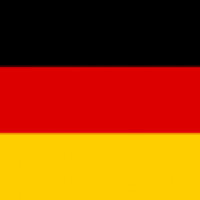Summary:
A German diagnostic SME has developed an auto-fluorescence analyser for non-invasive and invasive medical applications. The technology is based on a real-time measurement of the NADH enzyme. The functional prototype can detect the oxygen level and the vitality of the tissue, which is relevant in many diagnostic contexts, also in COVID infections. The SME is looking for partners interested in production and marketing within a license agreement or commercial agreement with technical assistance.
Description:
The German SME was founded out of a local university in 2004 as a service provider for research-based pharmaceutical companies, biotech companies, medical-biological research institutions and medical devices manufacturers. In 2008 the company has built up a development division for medical diagnostic and non-medical analysers based on laser- and optical fibre technologies and micro-electronics.
Oxygen deficiency in human tissue has been a non-detectable phenomenon so far and plays e.g. a role in COVID-19 research and the development of therapeutics against acute lung failure. Information about the oxygen supply has been only available by a systemic detection of the oxygen and lactate level in the whole blood circulation.
It has to be stated that a shift from aerobic towards anaerobic (oxygen-free) conditions in the tissue causes considerable negative effects for the vitality and functionality of the cells. Anoxia can lead to an acute break-down under stress or to a chronical syndrome by continuous oxygen deficiency.
The key enzymatic system, which indicates the change from aerobic to anaerobic conditions, is the redox-system
NAD+ / NADH. When NADH is increasing, a shift of the redox balance towards the anaerobic side is indicated, thus an oxygen deficiency is detected.
The new technology allows the analysis of the autofluorescence of the metabolic enzyme NADH. It is able to monitor the NADH gradient permanently in real time by non-invasive or invasive means without using additional fluorescence markers. The innovative technology is based on the detection of photons, which are emitted as a specific auto-fluorescence by the activated NADH molecules after excitation by UV laser pulses. The fluorescence excitation is achieved by the nanosecond pulse of a frequency-tripled Nd:YAG (optically activated) laser at a wavelength of 355 nm.
The use of special fibre optic probes allows a wide range of applications.
For the first time a diagnostic tool is provided for medical surgeons for evaluating dysfunctions of the oxygen transport within human tissue. This is important in many contexts.
Potential Applications in research and medical diagnostics:
• metabolic research, e.g. analysis/measurement of NADH
concentration in the cell metabolism
• monitoring of cellular oxygen demand
• analysis of cell activity in oxygen deficiency states, e.g. in
vitro monitoring of cell vitality (COVID research)
• effective control of acute lung failure (e.g. in COVID-19
infections)
• pharmacology / toxicology
• sports medicine, e.g. assessment of physical performance
Assessment of the therapeutic efficiency in:
• cardiovascular diseases
• acute lung failure
• diabetology
• neurological diseases
• oncology, e.g. assessment of the malignity of tumor cells
after radiotherapy
• rehabilitation, angiology and plastic surgery, e.g. assessment
of tissue recovery
• detection of cell pathological disorders of cell metabolism
The company has developed a functional prototype, which is approved according to the European Technical Assessment. Thus it is ready to be applied for testing and research purposes.
The company is looking for industrial partners interested in manufacturing and marketing the medical device and who are willing to invest in a further development of the technology. European funding (e.g. HORIZON Europe EIC Accelerator) would be possible. They should be capable to carry out and finance e.g. clinical studies, which are required for the approval according to the Medical Device Directive.
The licensing model can be negotiated in a flexible way. It can be exclusive or non-exclusive; option agreements for testing in advance are possible. Profit sharing or agreements with a single payment or commercial agreements with a transfer of the IPR are possible.
The company is willing to give technical assistance for further development under a commercial fee-for-service agreement.
Type (e.g. company, R&D institution…), field of industry and Role of Partner Sought:
The company is looking for industrial partners, who are interested in manufacturing and marketing the medical device and who are willing to invest in a further development of the technology. European funding (e.g. HORIZON Europe EIC Accelerator) would be an option. They should be capable to carry out and finance e.g. clinical studies, which are required for the approval according to the Medical Device Directive.
The licensing model can be negotiated in a flexible way. It can be exclusive or non-exclusive; option agreements for testing in advance are also possible. Profit sharing or agreements with a single payment are possible. Commercial agreements with a transfer of the IPR are possible as well.
The company is willing to give technical assistance for further development under a commercial fee-for-service agreement.
Stage of Development:
Prototype available for demonstration
IPR Status:
Patent(s) applied for but not yet granted
Comments Regarding IPR Status:
European Patent application
External code:
TODE20210804001








